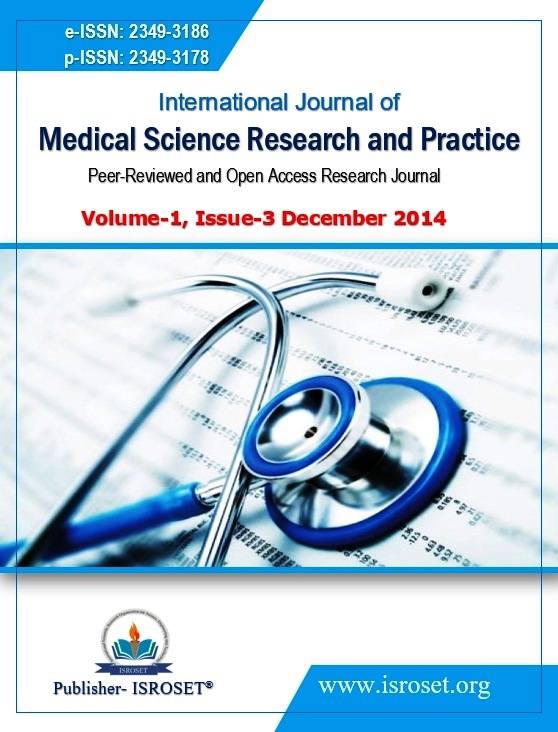Urgent carotid endarterectomy for acute cerebral ischemia
Keywords:
Carotid endarterectomy, Crescendo TIA, stroke in evolutionAbstract
Background-Carotid endarterectomy (CEA) is well established as the elective treatment for severe symptomatic carotid stenosis . In contrast, the merits of CEA performed as an emergency procedure in patients with acute stroke or fluctuating neurological deficit remain controversial.
Material Methods-CEA was performed as an emergency procedure on 16 patients within 4 to 48 hours after the onset of symptoms. Patients selected for urgent surgery fulfilled the following criteria: acute onset of fluctuating hemispheric neurological symptoms, significant carotid pathology, absence of cerebral hemorrhage, absence of massive cerebral damage and stable cardiopulmonary conditions. The patients presented with a crescendo-TIA in 7, evolving (stuttering) stroke in 3 and fluctuating neurological deficits in 6 - corresponding to a contralateral carotid stenosis.
Results-Following CEA, the neurological deficits improved instantaneously to complete recovery in 10 patients. The symptoms of 4 patients improved to non-disabling deficits, and remained unchanged in two patients. 14/16 patients were discharged within 8 days after admission. The neurologic status after discharge did not deteriorate in any of the patients during follow up - in fact it further improved in 4 of the patients (2 in whom there had been no change and 2 in whom there had been a partial improvement).
Conclusion-Emergency CEA may be beneficial for selected patients with stroke in evolution and fluctuating neurological deficits. Careful adherence to selection criteria, judicious intraoperative shunting, intensive unit care post surgery and an experienced team are recommended.
References
European Carotid Surgery Trialists' Collaborative Group. MRC European Carotid Surgery Trial: interim results for symptomatic patients with severe (70–99%) or with mild (0–29%) carotid stenosis. Lancet. 1991;337:1235–1243.
North American Symptomatic Carotid Endarterectomy Trial Collaborators. Beneficial effect of carotid endarterectomy in symptomatic patients with high-grade carotid stenosis. N Engl J Med 1991; 325: 445–453.
Sacco RL, Foulkes MA, Mohr JP, Wolf PA, Hier DB, Price TB. Determinants of early recurrence of cerebral infarction: the Stroke Data Bank. Stroke 1989; 20: 983– 989.
Davenport RJ, Dennis MS, Wellwood I, Warlow CP. Complications after acute stroke. Stroke 1996; 27: 415– 420.
Wylie EJ, Hein MF, Adams JE. Intracranial haemorrhage following surgical revascularization for treatment of acute strokes. J Neurosurg 1964; 21: 212–218.
Rob CG. Operation for acute completed stroke due to thrombosis of the internal carotid artery. Surgery 1969; 65: 862–865.
Beebe HG. Surgery for acute stroke. Semin Vasc Surg 1995; 8: 55–62.
Eckstein HH, Ringleb P, Dörfler A, Klemm K, Müller BT, Zegelman M et al . The carotid surgery for ischemic stroke trial: a prospective observational study on carotid endarterectomy in the early period after ischemic stroke. J Vasc Surg 2002; 36: 997–1004.
Bond R, Rerkasem K, Rothwell PM. Systematic review of the risks of carotid endarterectomy in relation to the clinical indication for and timing of surgery. Stroke 2003; 34: 2290–2301.
Pratesi C, Dorigo W, Alessi A, Azas L, Barbanti E, Lombardi R et al . Reducing the risk of intraoperative neurological complications during carotid endarterectomy with early distal control of the internal carotid artery. Eur J Vasc Endovasc Surg 2004; 28: 670– 673.
Rothwell PM, Eliasziw M, Gutnikov SA, Warlow CP, Barnett HJ, Carotid Endarterectomy Trialists Collaboration. Endarterectomy for symptomatic carotid stenosis in relation to clinical subgroups and timing of surgery. Lancet 2004; 20(363):915–924.
Ferrero E, Ferri M, Viazzo A, Gaggiano A, Ferrero M, Maggio D et al . Early carotid surgery in patients after acute ischemic stroke: is it safe? A retrospective analysis in a single center between early and delayed/deferred carotid surgery on 285 patients. Ann Vasc Surg. 2010; 24(7): 890-9.
Aleksic M, Rueger MA, Sobesky J, Heckenkamp J, Jacobs AH, Brunkwall J. Immediate CEA for symptomatic carotid disease preferably performed under local anaesthesia is safe. Vasa 2007; 36(3): 185-90.
Gorlitzer M, Froeschl A, Puschnig D , Locker E . Is the urgent carotid endarterectomy in patients with acute neurological symptoms a safe procedure? Interact CardioVasc Thorac Surg 2009; 8: 534-537.
Downloads
Published
How to Cite
Issue
Section
License

This work is licensed under a Creative Commons Attribution 4.0 International License.
Authors contributing to this journal agree to publish their articles under the Creative Commons Attribution 4.0 International License, allowing third parties to share their work (copy, distribute, transmit) and to adapt it, under the condition that the authors are given credit and that in the event of reuse or distribution, the terms of this license are made clear.






